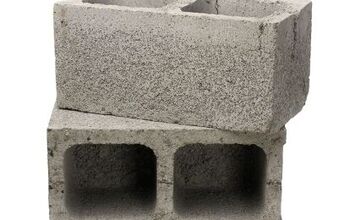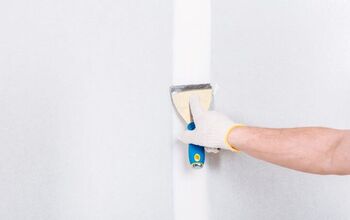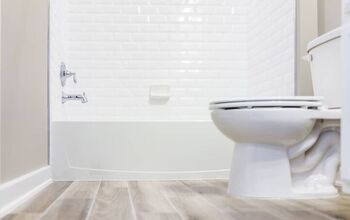How Much Does Drywall Weigh?

Not only do you need strong arms to take on drywall installation, but you will need mental willpower and a strong back. Wondering how much does drywall weigh is smart since drywall installation is not something to take on if you have back problems.
Standard drywall that is 1/2″ thick weighs 1.6 pounds per square foot, making it 51.2 pounds for one sheet of drywall. Drywall that is 5/8 inches thick weighs over 70 pounds and is used for fire ratings. Special lightweight drywall weighs an average of 25% less than its counterpart. A 12-foot sheet of lightweight drywall weighs 61.2 pounds compared to standard drywall that can weigh up to 110 pounds for a 12-foot sheet.
This guide will take you through the different types of drywall and the various thicknesses. In addition, we’ll talk about how that affects the weight of the wall. That way, whatever project you’re undertaking, you’ll know exactly which type of drywall to buy and what you need to move it and transport it as well.
Do You Need to Hire Drywall Installers?
Get free, zero-commitment quotes from pro contractors near you.

How Much Does Drywall Weigh? Consider The Thickness Of The Drywall
The main reason you might need to know how much drywall weighs is to assess how strong a wall will be. Drywall is very strong, but it does have limitations. Drywall is strong, but it should not be load-bearing.
This means that if you need to hang up a large mirror, then you will need to consider if the wall can hold it. There are two thicknesses available in drywall, ⅝” and ½.” Both thicknesses serve different purposes, such as commercial and residential.
The 5/8″ drywall is typically used for commercial purposes such as stores, offices, warehouses, and movie theaters. The idea behind this is to soundproof the wall or building.
Meanwhile, the 1/2″ thickness is typically used in residential settings, like your home or an apartment space. Technically, you could use 5/8″ for your house; however, this is a lot heavier and more expensive to install. The home’s structure may not hold this heavy of drywall up, so therefore, 1/2″ would be a better idea.
In order to avoid the physical strain of carrying heavy drywall, there is a new form of drywall. This drywall is roughly 25% lighter than standard drywall and is called lightweight drywall. Lightweight drywall is essentially the same as standard drywall, except for the weight.
Lightweight vs. Standard Drywall
Both standard drywall and lightweight drywall are good to put into almost any room in your house. The only exception to this is your bathroom. Despite this, lightweight is more user-friendly since it simply weighs less.
This allows you to be more productive. Not to mention, the lighter-weight drywall is less expensive to purchase. Also, it’s usually less expensive to hire a professional to install since the company won’t need three to four people to help carry it.
Type-X vs. Non-Type-X
There are two forms of drywall that are typically used, type-x and non-type-X. The difference between these is that type-x is fire-rated. Lightweight 5/8″ drywall is not usually Type-X. This is because, in order to have a fire-rated wall with lightweight 5/8″ drywall, you need to apply the drywall as if it is 1/2″ drywall.
To do this, you must use two layers of lightweight 5/8″ drywall for every single layer of 5/8″ Type-X that you normally use. In order to use this, you will need to verify it with your local fire codes.
What Is Type-C Drywall?
Type-C is drywall is even more fireproof than Type-X. Although type-X drywall is the most common fire-resistant drywall, builders use type-c when more protection is needed. Type-C specifically has a special core formula that includes a higher concentration of fiberglass.
How Much Does Drywall Weigh If It Is Lightweight Drywall?
Most lightweight drywall is manufactured with a 1/2-inch thickness. It is available in various lengths, including options of eight, nine, ten, or twelve feet.
Since lightweight drywall weighs 25 percent less than standard drywall, how much the drywall weighs is as follows:
| 8 feet | 9 feet | 10 feet | 12 feet |
| 40.8lbs | 45.9lbs | 51lbs | 61.2lbs |
Typically the advantage of using lightweight over standard drywall is that you will be carrying about 13 pounds less on average.
Although lightweight is made from the same gypsum core as standard drywall, lightweight drywall utilizes adhesive polymers and various raw materials. This makes lightweight drywall cheaper to ship as well.
The downsides to lightweight drywall include increased sound transmission. Plus, it is easier to break, more difficult to score and snap, it is more expensive, and can be more brittle.
Uses For Lightweight Drywall
Lightweight is meant to be a complete replacement for standard weight drywall. This means that any application that is done with ½-inch standard drywall normally can be replaced with lightweight drywall. This includes not only walls and ceilings in residential construction as well.
Using Standard Drywall — How Much Does Drywall Weigh?
Standard drywall is a lot more versatile and is commonly manufactured in thicknesses of ⅜”, ½,” or ⅝.” These come in lengths of eight, ten, or twelve feet.
| 8-Feet Sheet of ⅜” | 10-Feet Sheet of ⅜” | 12-Feet Sheet of ⅜” |
| 44.8lbs | 56lbs | 67.2lbs |
| 8-Feet Sheet of ½” | 10-Feet Sheet of ½” | 12-Feet Sheet of ½” |
| 54.4lbs | 68lbs | 81.6lbs |
| 8-Feet Sheet of ⅝” | 10-Feet Sheet of ⅝” | 12-Feet Sheet of ⅝” |
| 73.6lbs | 92lbs | 110.4lbs |
Why Use Standard Drywall Over Lightweight?
When considering how much drywall weighs, standard drywall weighs more, and therefore it is stronger. If you are planning on hanging large objects on your walls, such as heavy artwork, you may need to go with standard drywall. It is also a lot cheaper than lightweight drywall. Although you may end up paying more in shipping costs, if you transport it yourself, then you will be saving a lot of money.
Calculating How Much Drywall Weigh When You Have Irregular Sized Boards?
If you happen to need to use sheets that are not a regular size, then you may need to do some calculations of your own. There is a method to find out the exact weight of your drywall boards.
- Determining the actual square footage of the board
- Then do a math equation.
Standard ⅜” drywall weighs 1.4 pounds per square foot, ½” drywall weighs 1.6 pounds per square foot, and ⅝” drywall weighs 2.2 pounds per square foot.
Lightweight drywall will weigh up to 25 percent less and weighs ½” thickness, which is 0.3 pounds per square foot.
- Multiply the weight per square foot times the number of square feet, and you will obtain how much your drywall weighs.
Common Problems When Putting Up Drywall
Unfortunately, a common problem when putting up drywall is that it cracks very easily. Although once you put the wall up, it is not a huge hassle, if it cracks while putting it up, then it will be a disaster. If this occurs, then you will need to remove the entire sheet and completely replace it.
When putting up drywall, you need to consider that it can be easily broken. You cannot accidentally elbow drywall as this will break it.
Transporting and installing drywall can also be stressful because of the possibility of cracking. Minor bumps can make the entire sheet unusable although drywall is not incredibly expensive, this is still a waste of money and a waste of time.
Different Types Of Drywall
In addition to choosing the drywall by thickness and weight, you’ll have to also weigh the factors around the types of drywall. Different types of drywall include:
- Standard
- Mold Resistant
- Moisture Resistant
- Fire Resistant
Each of these types of drywall has different benefits they provide you with, so it’s a good idea to understand how each type can benefit you and the project that you are undertaking.
Standard Drywall
This type of drywall is your most basic type. There are no special features, and it’s the most prominent inside of residential construction jobs. Standard drywall is best used for:
Walls and ceilings
Finishing the unfinished basements.
Mold Resistant Drywall
Mold-resistant drywall has a paperless backing and includes a coating that helps prevent any mold in humid or moist conditions.
- This type is excellent for bathrooms and kitchens
- It also helps to extend the appearance of any surfaces in your wet or humid area
Moisture Resistant Drywall
It goes without saying that the best place to use moisture-resistant drywall is in a place that’s prone to humid weather. There is a paperless backing with a special coating that helps prevent moisture and mold growth.
This type of drywall is excellent for:
- Bathrooms
- Basements
- Kitchens
- Utility rooms
- Shower enclosures
- Shower areas
- Laundry rooms
However, if you’re using it in your shower enclosure, make sure you use a cement backer board.
Fire Resistant Drywall
The fire-resistant drywall has glass fibers that make it extra thick. This is great for utility rooms and garages or any areas that are near a wood stove or furnace.
Some other benefits of fire-resistant drywall include:
- Slows the speed of fires
- Generates less smoke
- Is required by some codes
- Has better sound control
Our Takeaway
Related Questions
How many screws go into a sheet of drywall?
Use the thinnest sheet of drywall that you can for your job without compromising structural integrity and quality. As the person delivering your drywall sheets to drop them off as close to the job site as possible. This will not only protect you from injury but will also decrease the likelihood of any damage occurring to the drywall.
Move one sheet of drywall at a time if you’re working on your own. If you have to move multiple sheets of drywall at one time, have a helper and use a hand truck or dolly.
Also, it’s helpful to use a jack or drywall lift when installing the drywall, especially if you don’t have any help. If you’re unsure of your skills, it’s best to enlist the help of a knowledgeable friend or hire a pro.
Do You Need to Hire Drywall Installers?
Get free, zero-commitment quotes from pro contractors near you.


Real estate agent and copywriter, originally from California. Chloe brings her real estate expertise into her writing to create effective and helpful home guides for you! When not writing or selling homes, she spends her time as a digital nomad traveling the world.
More by Chloe Meltzer



























